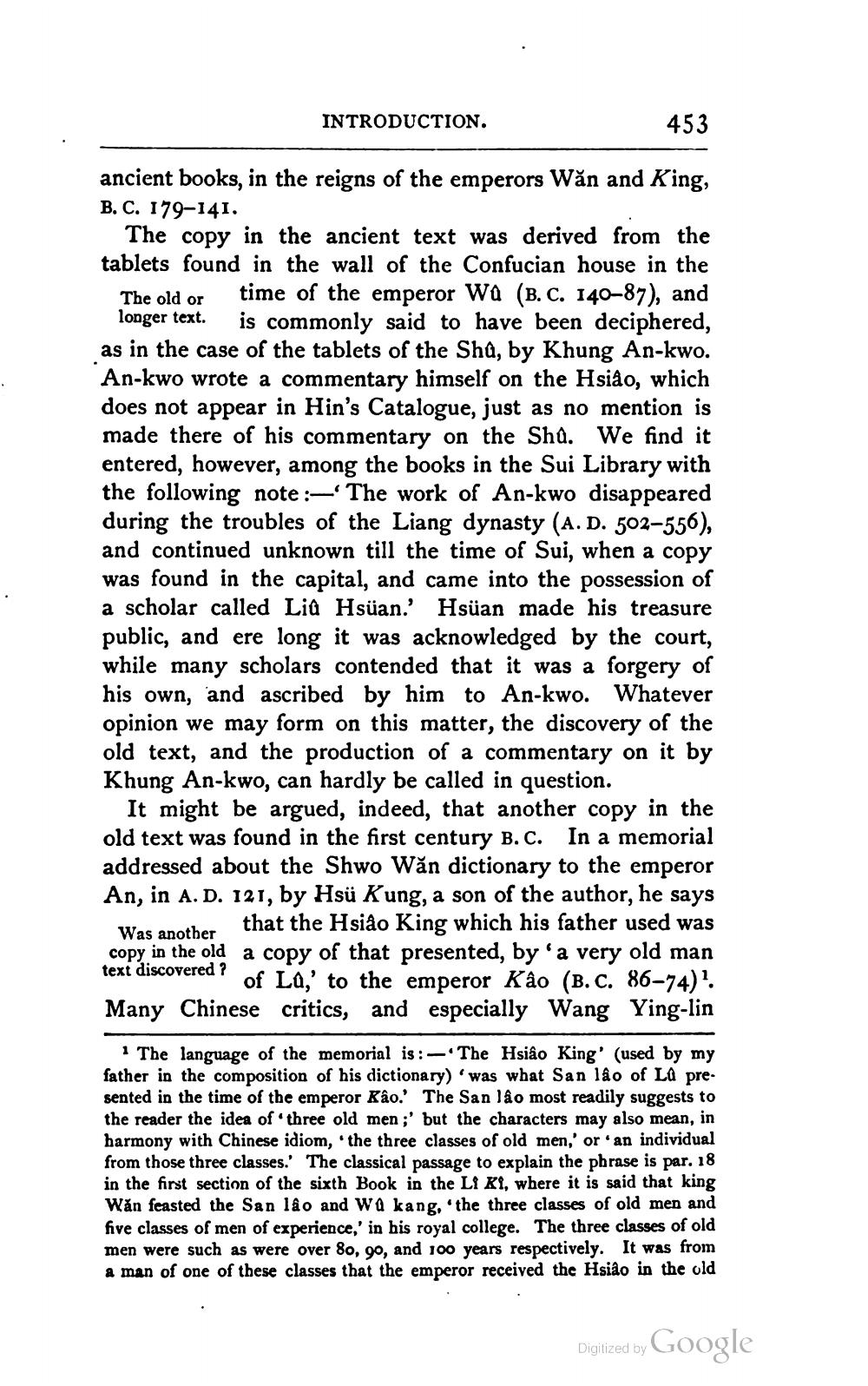________________
INTRODUCTION.
453
ancient books, in the reigns of the emperors Wăn and King, B. C. 179–141.
The copy in the ancient text was derived from the tablets found in the wall of the Confucian house in the
The old or time of the emperor Wu (B. C. 140–87), and longer text. is commonly said to have been deciphered, as in the case of the tablets of the Sha, by Khung An-kwo. An-kwo wrote a commentary himself on the Hsiao, which does not appear in Hin's Catalogue, just as no mention is made there of his commentary on the Shů. We find it entered, however, among the books in the Sui Library with the following note : The work of An-kwo disappeared during the troubles of the Liang dynasty (A. D. 502-556), and continued unknown till the time of Sui, when a copy was found in the capital, and came into the possession of a scholar called Lill Hsuan.' Hsüan made his treasure public, and ere long it was acknowledged by the court, while many scholars contended that it was a forgery of his own, and ascribed by him to An-kwo. Whatever opinion we may form on this matter, the discovery of the old text, and the production of a commentary on it by Khung An-kwo, can hardly be called in question.
It might be argued, indeed, that another copy in the old text was found in the first century B.C. In a memorial addressed about the Shwo Wăn dictionary to the emperor An, in A. D. 121, by Hsü Kung, a son of the author, he says
Was another that the Hsiao King which his father used was copy in the old a copy of that presented, by a very old man text discovered ? of La,' to the emperor Kâo (B.C. 86-74)': Many Chinese critics, and especially Wang Ying-lin
1 The language of the memorial is: -The Hsiâo King' (used by my father in the composition of his dictionary) was what San lao of La presented in the time of the emperor Kâo.' The San Jao most readily suggests to the reader the idea of three old men ;' but the characters may also mean, in harmony with Chinese idiom, the three classes of old men,' or an individual from those three classes. The classical passage to explain the phrase is par. 18 in the first section of the sixth Book in the Li Ki, where it is said that king Wăn feasted the San lao and wa kang, the three classes of old men and five classes of men of experience,' in his royal college. The three classes of old men were such as were over 80, 90, and 100 years respectively. It was from a man of one of these classes that the emperor received the Hsido in the old
Digitized by Google




